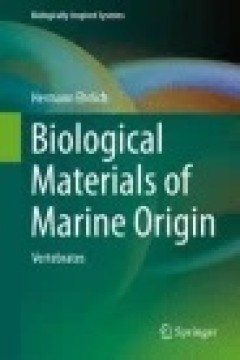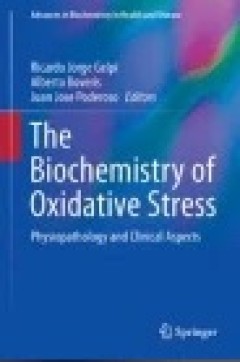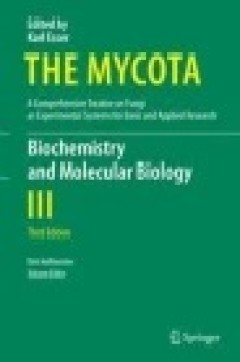Filter by

Biomolecular Interfaces : Interactions, Functions and Drug Design
The book focuses on the aqueous interface of biomolecules, a vital yet overlooked area of biophysical research. Most biological phenomena cannot be fully understood at the molecular level without considering interfacial behavior. The author presents conceptual advances in molecular biophysics that herald the advent of a new discipline, epistructural biology, centered on the interactions of w…
- Edition
- -
- ISBN/ISSN
- 978-3-319-16850-0
- Collation
- -
- Series Title
- -
- Call Number
- 612.015

Biomedical Applications of Natural Proteins An Emerging Era in Biomedical Sci…
This book is intended as a reference guide for graduate students, postgraduate students and researchers with a basic knowledge of protein chemistry who would like to know more about the biomedical applications of natural proteins to promote healthier lives. The book is divided into ten chapters, each of which explains different natural proteins and their established biomedical applications. …
- Edition
- -
- ISBN/ISSN
- 978-81-322-2491-4
- Collation
- -
- Series Title
- -
- Call Number
- 612.015

Biological Materials of Marine Origin
This is the second monograph by the author on biological materials of marine origin. The initial book is dedicated to the biological materials of marine invertebrates. This work is a source of modern knowledge on biomineralization, biomimetics and materials science with respect to marine vertebrates. For the first time in scientific literature the author gives the most coherent analysis of the …
- Edition
- -
- ISBN/ISSN
- 978-94-007-5730-1
- Collation
- -
- Series Title
- -
- Call Number
- 612.015

Biochemistry of Oxidative Stress
The strongest point of this book titled “Biochemistry of Oxidative Stress: Physiopathology and Clinical Aspects”, is that the academic and scientific background of the authors/editors guarantee the authorship of a book comprising all aspects of oxidative stress, ranging from very molecular aspects, to clinical application, including the antioxidant therapy. Of particular importance is the f…
- Edition
- -
- ISBN/ISSN
- -
- Collation
- -
- Series Title
- -
- Call Number
- 612.015

Biochemistry of Beer Fermentation
Beer is the most popular alcoholic beverage in the world. Yet, behind each glass of beer there is an enormous amount of work invested. If the first image that comes to your mind is the lifting of heavy bags of malt or carrying kegs, guess again! Most of the work involved in brewing is carried out by “microworkers” – yeast and their enzymes! These special helpers are responsible for cataly…
- Edition
- -
- ISBN/ISSN
- -
- Collation
- -
- Series Title
- -
- Call Number
- 612.015

Biochemistry and Molecular Biology
This new edition provides a comprehensive look at the molecular genetics and biochemical basis of fungal biology, covering important model organisms such as Aspergilli while also integrating advances made with zygomycetes and basidiomycetes. This book groups a total of 15 chapters authored by expert scholars in their respective fields into four sections. Five chapters cover various aspects of …
- Edition
- -
- ISBN/ISSN
- 978-3-319-27790-5
- Collation
- -
- Series Title
- -
- Call Number
- 612.015

Bio-inspired Studies on Adhesion of a Thin Film on a Rigid Substrate
The thesis systematically investigates the factors which influence many animals’ robust adhesion abilities and micro-reversible adhesion mechanisms, including the geometric principles of their adhesion, relative humidity, surface roughness and pre-tension. Studies exploring biological adhesion mechanisms are not only of great significance for the design of advanced adhesive materials and adhe…
- Edition
- -
- ISBN/ISSN
- -
- Collation
- -
- Series Title
- -
- Call Number
- 540

Bio-based Polyols and Polyurethanes
This brief outlines the most recent advances in the production of polyols and polyurethanes from renewable resources, mainly vegetable oils, lignocellulosic biomass, starch, and protein. The typical processes for the production of polyols from each of the above mentioned feedstocks are introduced and the properties of the resultant polyols and polyurethanes are also discussed.
- Edition
- -
- ISBN/ISSN
- 978-3-319-21539-6
- Collation
- -
- Series Title
- -
- Call Number
- 661.03

Drugs Politics: Managing Disorder in the Islamic Republic of Iran
Iran has one of the world’s highest rates of drug addiction, estimated to be between two and seven per cent of the entire population. This makes the questions this book asks all the more salient: what is the place of illegal substances in the politics of modern Iran?
- Edition
- -
- ISBN/ISSN
- 9781108567084
- Collation
- -
- Series Title
- -
- Call Number
- 362.29 GHI d
 Computer Science, Information & General Works
Computer Science, Information & General Works  Philosophy & Psychology
Philosophy & Psychology  Religion
Religion  Social Sciences
Social Sciences  Language
Language  Pure Science
Pure Science  Applied Sciences
Applied Sciences  Art & Recreation
Art & Recreation  Literature
Literature  History & Geography
History & Geography